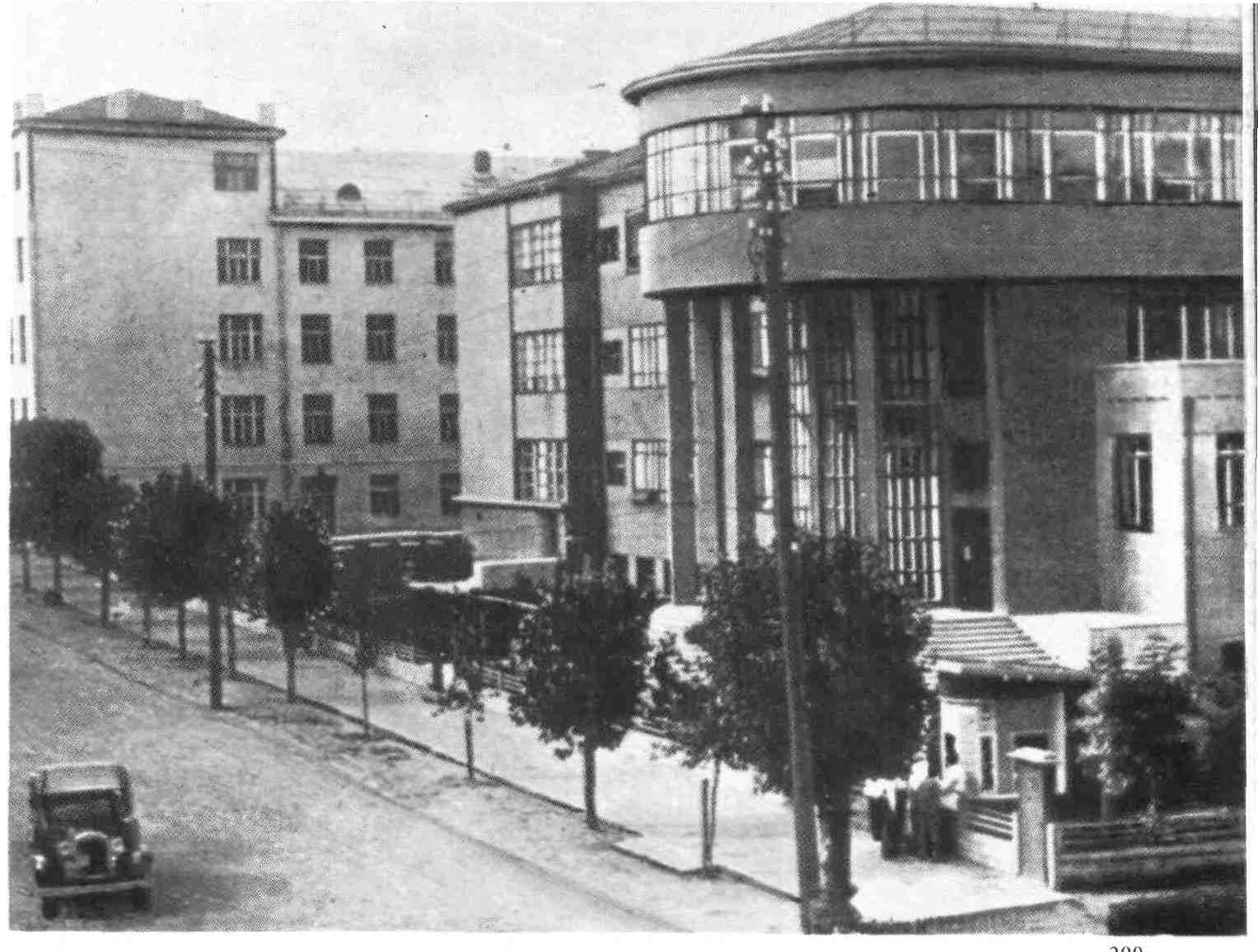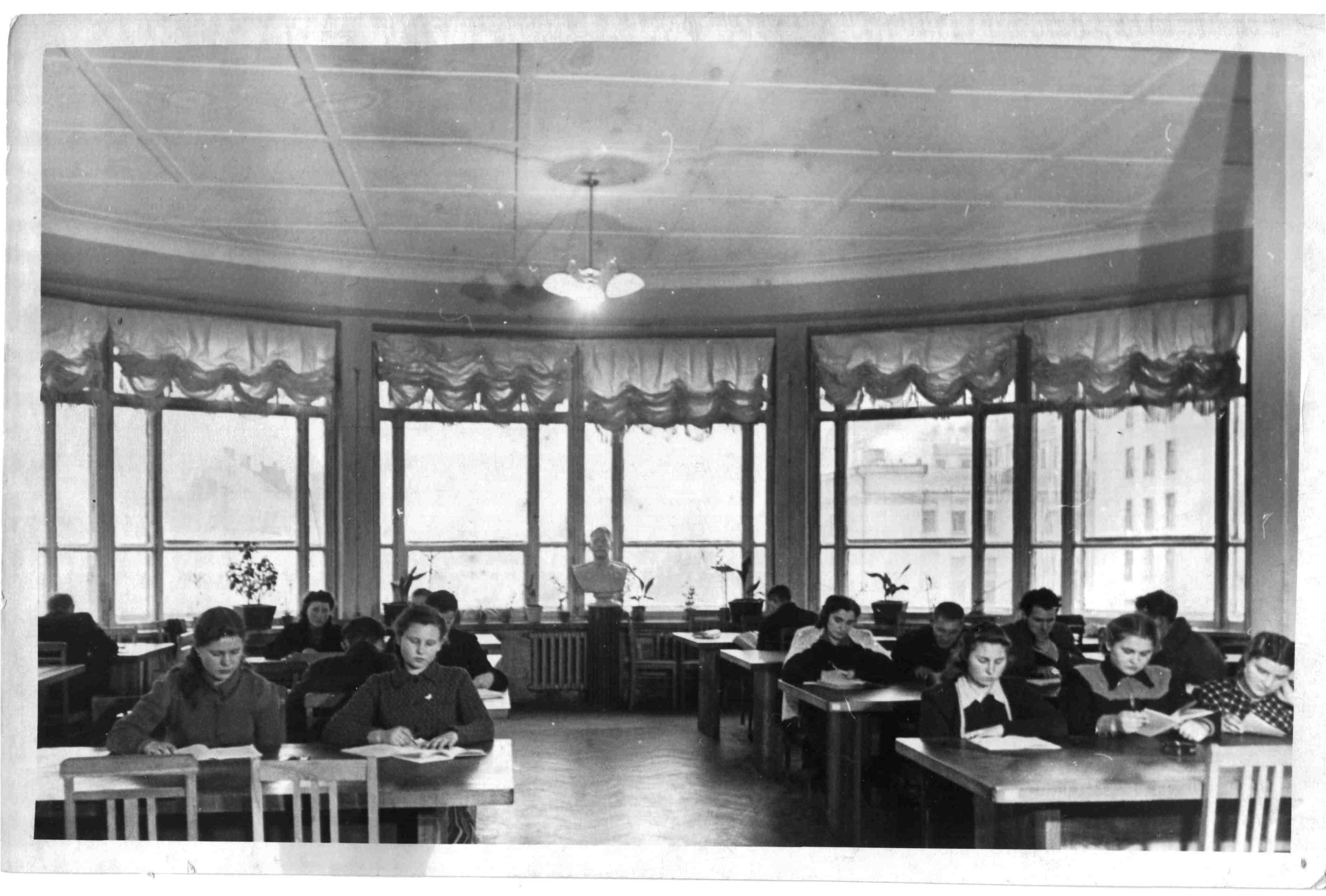Library in the Prewar Period (1926–1941)
Historians and culture experts consider the late 1920s as the “second Belarusian Renaissance”. At that time the modern Belarusian language were developed, Belarusian national science, culture, and education and a sustainable government were established. The State Library contributed to this general development. The Library were collecting and kept national documentary heritage; in the Library Belarusian Book Chamber, Belarusian Bibliographic Bureau and other important institutions of Belarusian national culture were working.
The Library Charter (May 1926) defined the main tasks of the Library: collection and safekeeping of printed and written materials in all branches of knowledge, their systematization and bibliographic processing; registration of the BSSR press, and user service. By that time the Library became the main centre of the safekeeping of Belarusian national document and materials concerning Belarus.
All these materials were processed, classified and provided to the Library users among which were visitors from state, party and public institutions and organizations of the republic. Institute of Belarusian Culture, the BSSR Planning Commission, Communist University of Belarus and others. Joseph Simanovky said the modern state library was not only the central state scientific institution and national book depository, but also a component of the govermnental system as a state documentation and information body.
By the end of the 1920th the Library collections and the number of its users essentially increased, therefore the Jubilee House lacked for free spaces. The People’s Commissariat of the BSSR building on Krasnoarmeyskaya Street. G. Lavrov, the eminent Belarusian architect was the author of an architectural project which combined functionality and tendency to express a particular role of the Library building.

|
|
The Library building. Project by the architect G. Lavrov (1932) |
The opening of the new building took place in 1932 and was timed to the 10th anniversary of the Library. By this time the Library collections totaled 1 million materials, the number of its users was 9 thousand. The Library performed scientific, methodological, and bibliographic works. Due to these achievements in 1932 the Library was named after V.I. Lenin and re-organized into the State Library and the Bibliographic Institute of the BSSR.
The Library developed not only its own collections but also the whole Belarusian library system. The status of the State Library opened its branches in other Belarusian cities: Vitebsk (1929), Mogilev (1935), Gomel (1933), and in the House of Government in Minsk (1933). After the reform of administrative and territorial division of the BSSR (1938) all these libraries were re-organized into district libraries and Governmental Library in Minsk (today the Presidential Library) named after A.M. Gorky. The Belarusian system of district libraries was completed after the re-organization of the Minsk City Library named after A.S. Pushkin and establishment in 1940 libraries in Grodno and Brest.
Parallel to the the expansion of its own funds, the library solved the problems associated with the development of the entire library system of the country. The status of the State Library gave it the opportunity to open its own branches in other cities of Belarus. This was the beginning of the creation of a hierarchical network of large libraries throughout the republic: library branches were opened in Vitebsk (in 1929), Mogilev (1935), Gomel (1933), and also at the Government House (1933). After the reform of the administrative-territorial division of the BSSR in 1938, all of them were transformed into regional libraries and the Government Library named after A.M. Gorky in Minsk (today it has Presidential status). The system of regional libraries of the republic acquired finished form after the reorganization of the Minsk City Library named after A. Pushkin in 1940, immediately after the annexation of the western territories, libraries in Grodno and Brest.
In 1934 in the Library was established a methodological section for monitoring of Belarusian libraries activities, rendering of instruction and methodological assistance, and development of methodological materials. In three years the methodological section was re-organized into a methodological office (the library science department performs today methodological work). The State Library innovated the interlibrary loan system: the BSSR became the first Soviet republic where was implemented a “cascading” system of order sending from a village library to a republican library. Before that the interlibrary loan was used mainly by the BSSR special libraries and member republics of the USSR.

|
|
The central reading room |
In the 1930s in the USSR the State and the Communist Party intensified their control over society. In the USSR arose totalitarian regime. Under these conditions the libraries, and first of all the State Library were regarded as not only cultural institutions, but also as ideological means forming the civil conscience. In 1923 by the recommendation of the Central Committee of Communist Party of Belarus an office of scientific socialism where a collection of Marxist literature was kept was established in the Library. In 1934 a special book depository destined for “the fight against the misuse of a book as an ideological weapon in the class struggle” was established. This special book depository existed until 1990. There were kept materials forbidden for the general use. Major part of materials of them was represented by the Belarusian authors’ works.
The Library didn’t avoid political repressions. After the article “Who is at the Head of the State Library” by R. Frolov in the “Zvezda” central newspaper (September 14th, 1937) J. Simanovsky, Y.Bibilo and other librarians were dismissed. After the World War II they were rehabilitated and reinstate in their positions.

|
| V.I. Lenin statue in the Library foyer |
Nevertheless in the 1920-30th the Library achieved a considerable success. In 1941 the Library collections totaled 2 million materials; the number of its users was 15 thousand. The Library rated fifth among the thirty biggest libraries of the USSR. The Library became the main bibliographic and methodological center of Belarus.
In these years the Library received a new building and made a significant progress. The Library collections grew up; the Belarusian library system was developed. But the peaceful life was interrupted by the World War II which began in the USSR on July 22nd, 1941.


